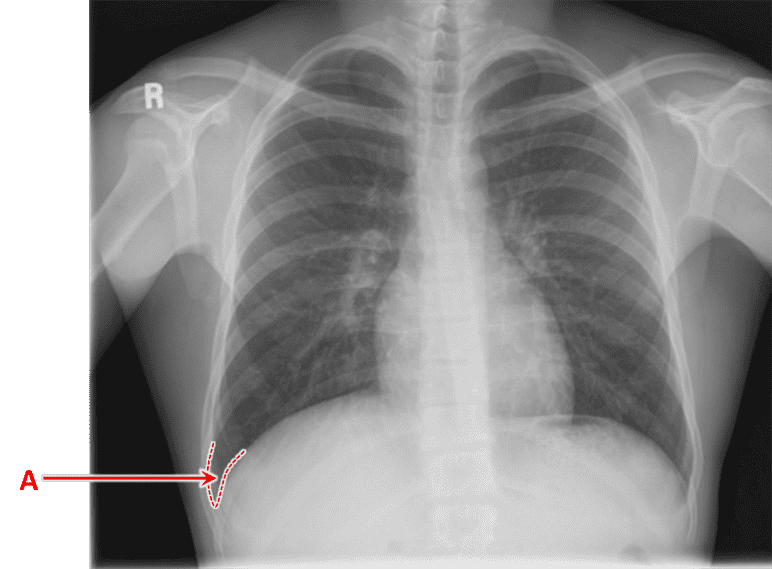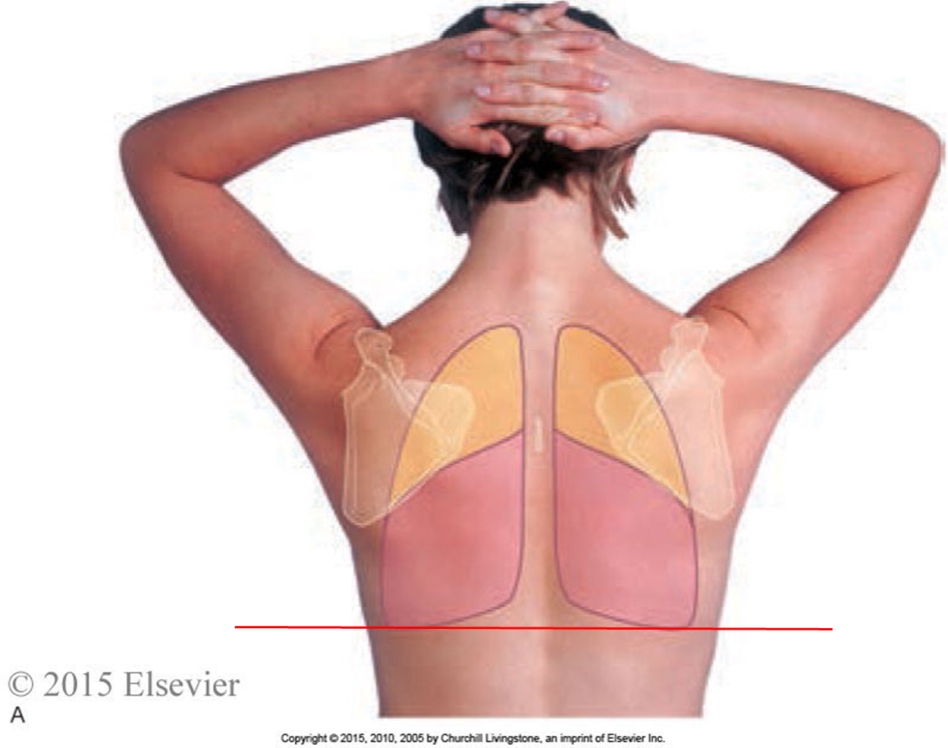Question 1
1. On contraction, the diaphragm changes in shape and position to increase thoracic volume; it _____________ and _____________, respectively.
Choices:
- flattens descends
Answers:
- flattens descends
Comments:
- Correct
- That's right! On contraction, the diaphragm flattens and descends to increase thoracic volume in the vertical dimension.
- Continue
Question 2
2. The caval hiatus of the diaphragm is located at the level of the ______ ______ vertebra.
Choices:
- 8th thoracic
- T 8
- 8 thoracic
- thoracic 8
- eighth thoracic
Answers:
- 8th thoracic
- T 8
- 8 thoracic
- thoracic 8
- eighth thoracic
Comments:
- Correct
- That's right! The caval hiatus is located at the level of the 8th thoracic vertebra.
- Continue
Question 3
3. While the central diaphragm is innervated by the phrenic nerves, its periphery is innervated by _____________ nerves.
Choices:
- intercostal
Answers:
- intercostal
Comments:
- Correct
- That's right! The periphery of the diaphragm is innervated by adjacent intercostal nerves.
- Continue
Question 4
4. The ____________ _______________ arteries are the primary source of blood supply to the diaphragm.
Choices:
- inferior phrenic
Answers:
- inferior phrenic
Comments:
- Correct
- That's right! The inferior phrenic arteries are the primary source of blood to the diaphragm. The superior phrenic arteries and branches of the internal thoracic arteries contribute, as well.
- Continue
Question 5
5. The ____________ _______________ muscles, on contraction, elevate the ribs to increase the volume of the thorax.
Choices:
- external intercostal
Answers:
- external intercostal
Comments:
- Correct
- That's right! The volume of the thorax increases with elevation of the ribs, a function of the external intercostal muscles.
- Continue
Question 6
6. In the midaxillary line, the line of pleural reflection crosses the __________ rib.
Choices:
- tenth
- 10th
Answers:
- tenth
- 10th
Comments:
- Correct
- That's right! The line of pleural reflection crosses the tenth rib in the midaxillary line.
- Continue
Question 7
6. In the midclavicular line, the inferior border of the lung crosses the ______ rib.
Choices:
- sixth
- 6th
Answers:
- sixth
- 6th
Comments:
- Correct
- That's right! The inferior border of the lung crosses the sixth rib in the midclavicular line.
- Continue
Question 8
8. Identify space A. Be specific.
Choices:
- costodiaphragmatic recess
- right costodiaphragmatic recess
Answers:
- costodiaphragmatic recess
- right costodiaphragmatic recess
Comments:
- Correct
- That's right! Space A is indicating the costodiaphragmatic recess, where pleural fluid can be sampled in thoracentesis.
- Continue
Question 9
9. The pathological condition in which fluid, usually blood, fills the pericardial sac is called ___________ ____________.
Choices:
- cardiac tamponade
Answers:
- cardiac tamponade
Comments:
- Correct
- That's right! In cardiac tamponade, the pericardial sac fills with fluid, usually blood. This restricts cardiac filling and therefore decreases cardiac output.
- Continue
Question 10
10. At what vertebral level is the inferior border of the lung located?
Choices:
- T10
- 10th thoracic
Answers:
- T10
- 10th thoracic
Comments:
- Correct
- That's right! The inferior border of the lung at the back is located at the vertebral level of T10. Note that the inferior border of lung in midclavicular and midaxillary lines are at T6 and T8 respectively.
- Continue
Question 11
11. You place your stethoscope on a patient’s chest wall adjacent to his right nipple. You are listening to the sounds of the ____________ lobe of his right lung.
Choices:
- middle
Answers:
- middle
Comments:
- Correct
- That's right! Breath sounds from the middle lobe of the right lung are best heard with the stethoscope placed in the region of the right nipple.
- Continue







